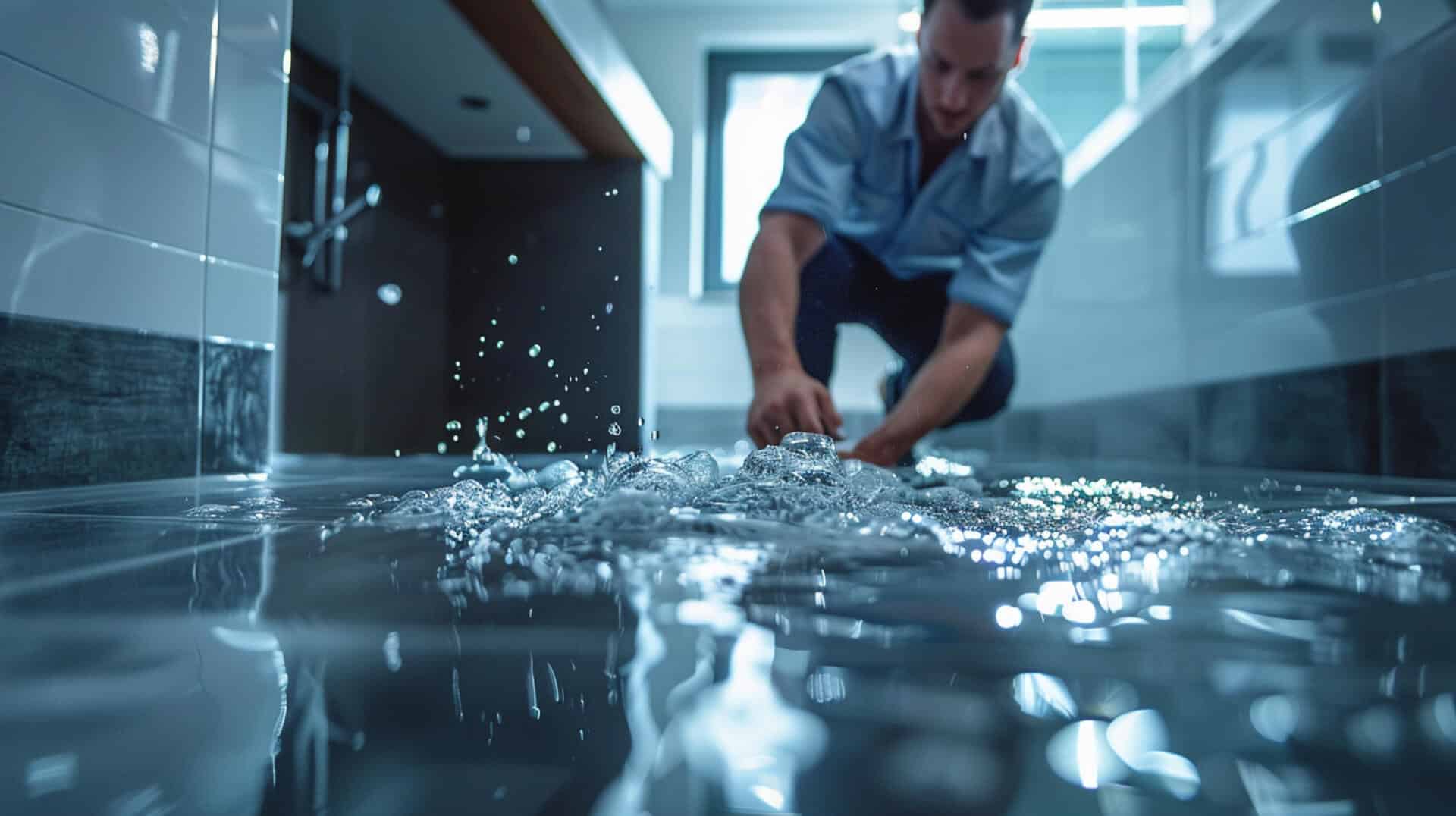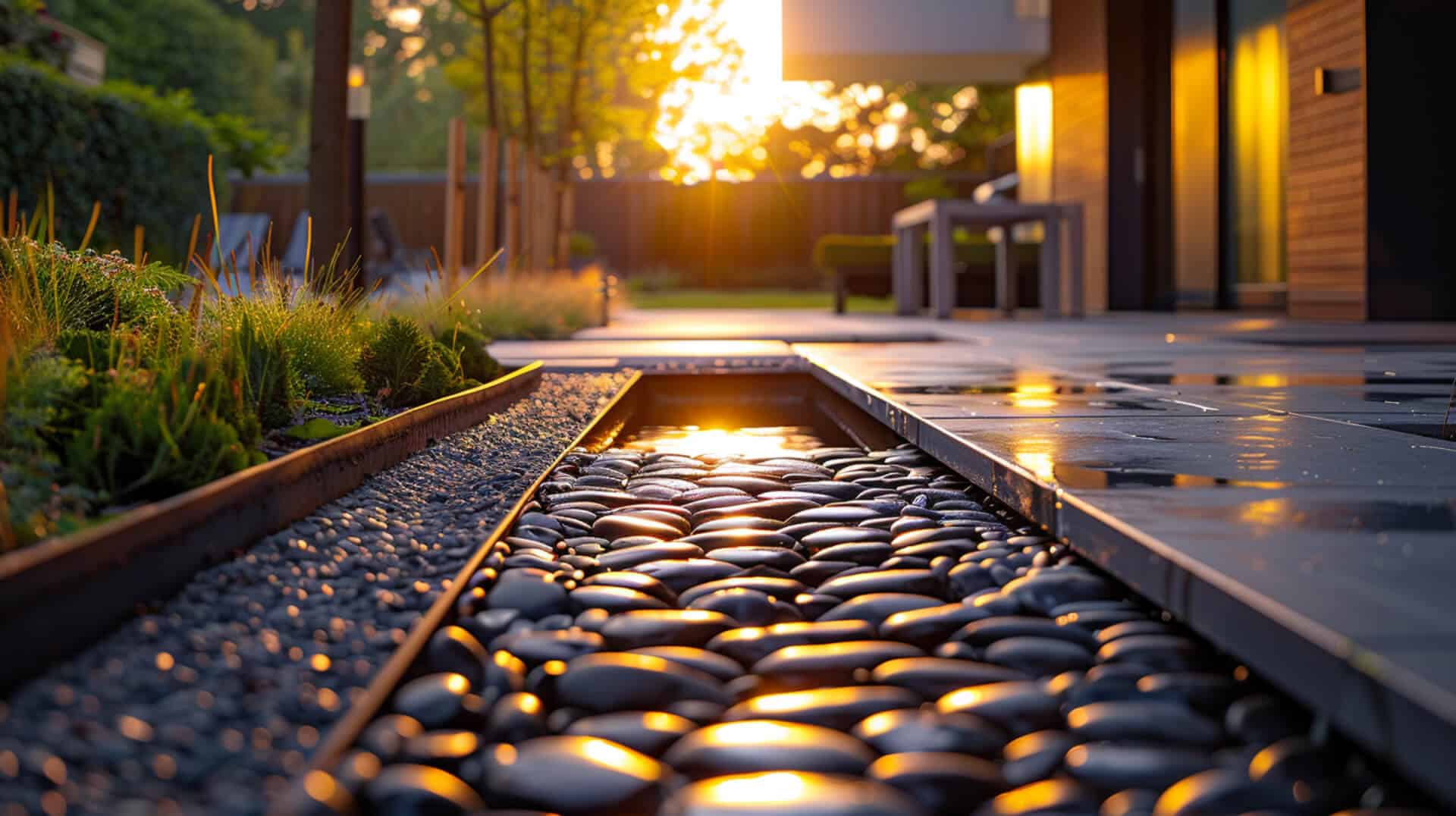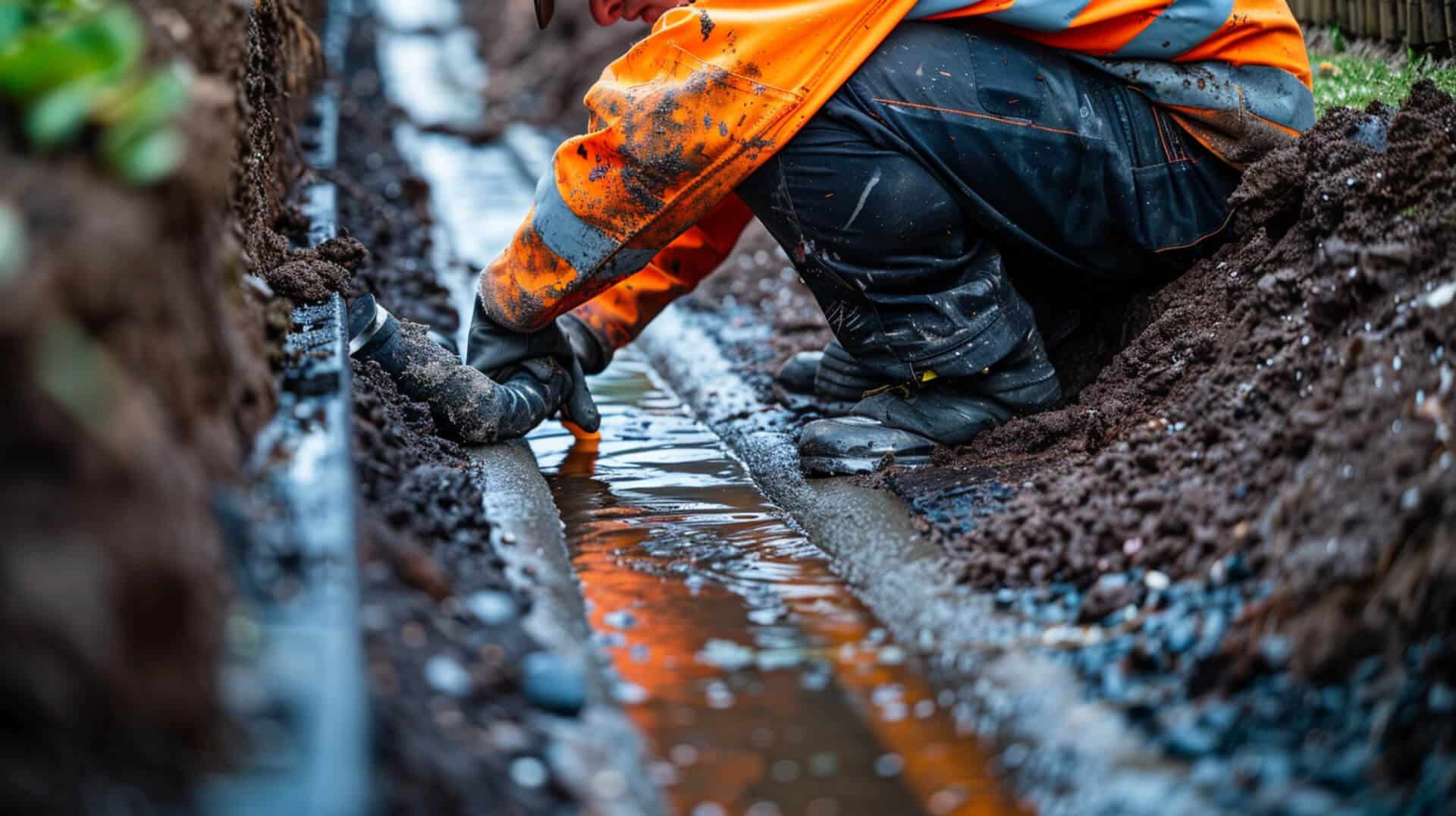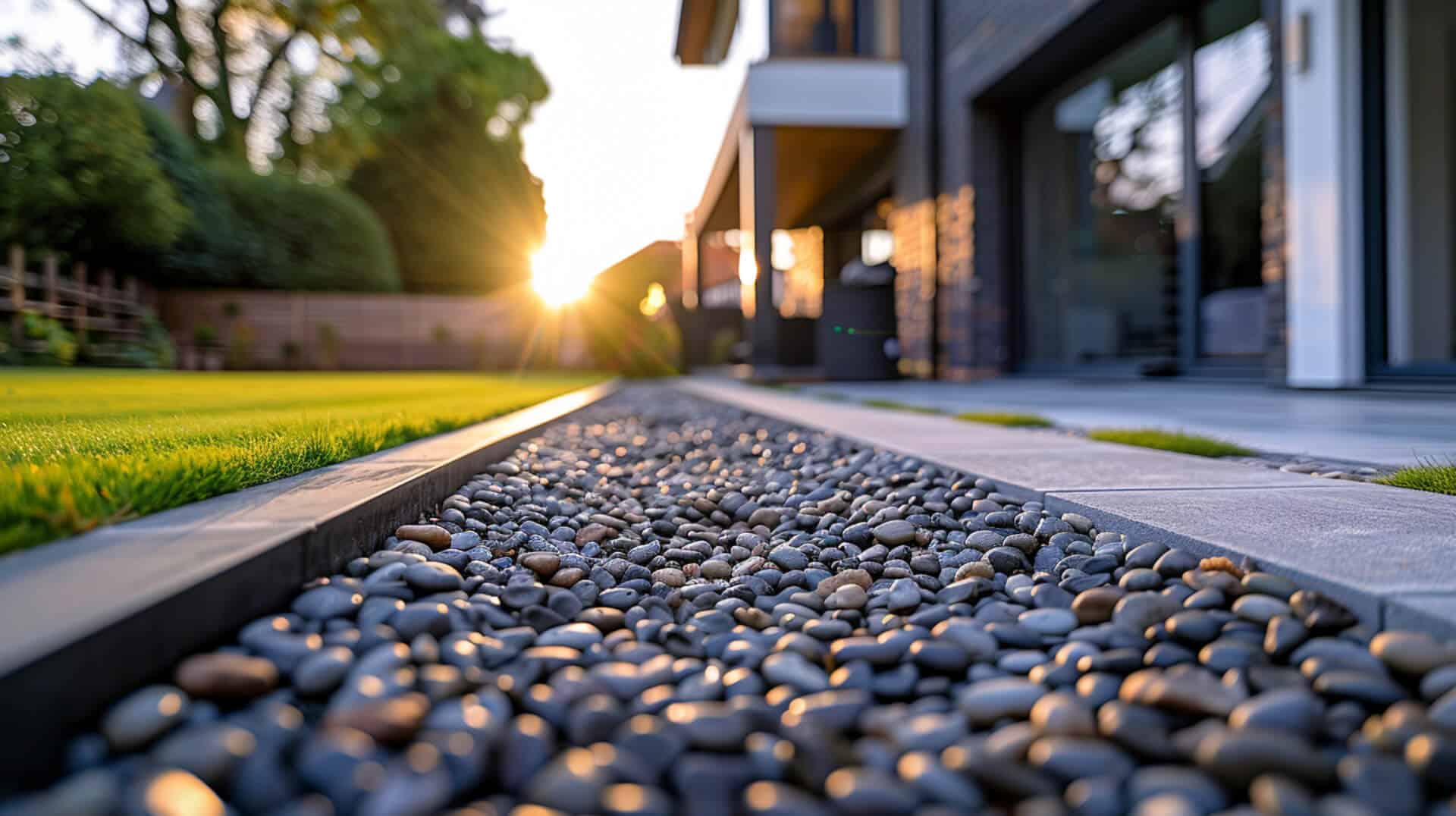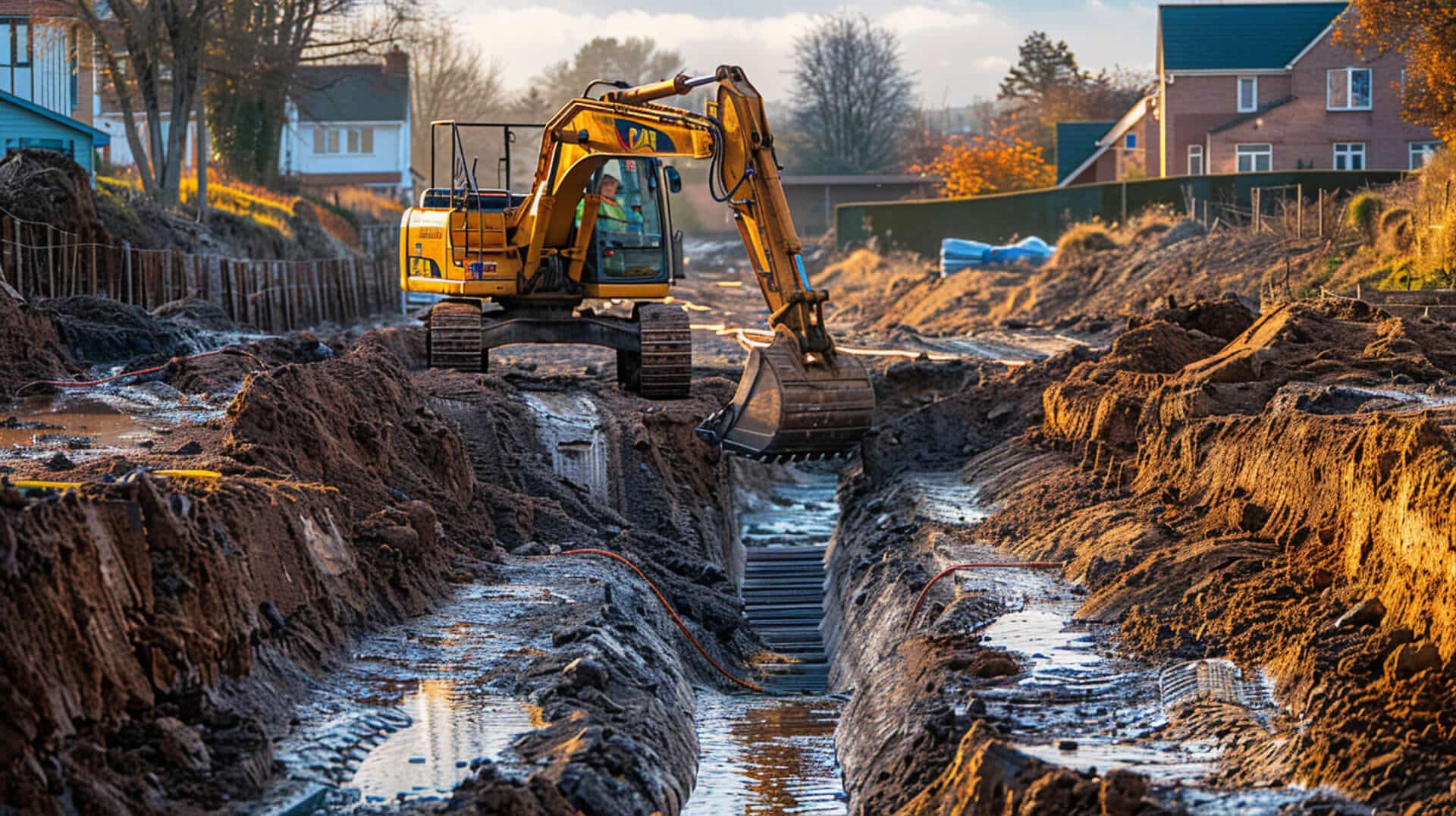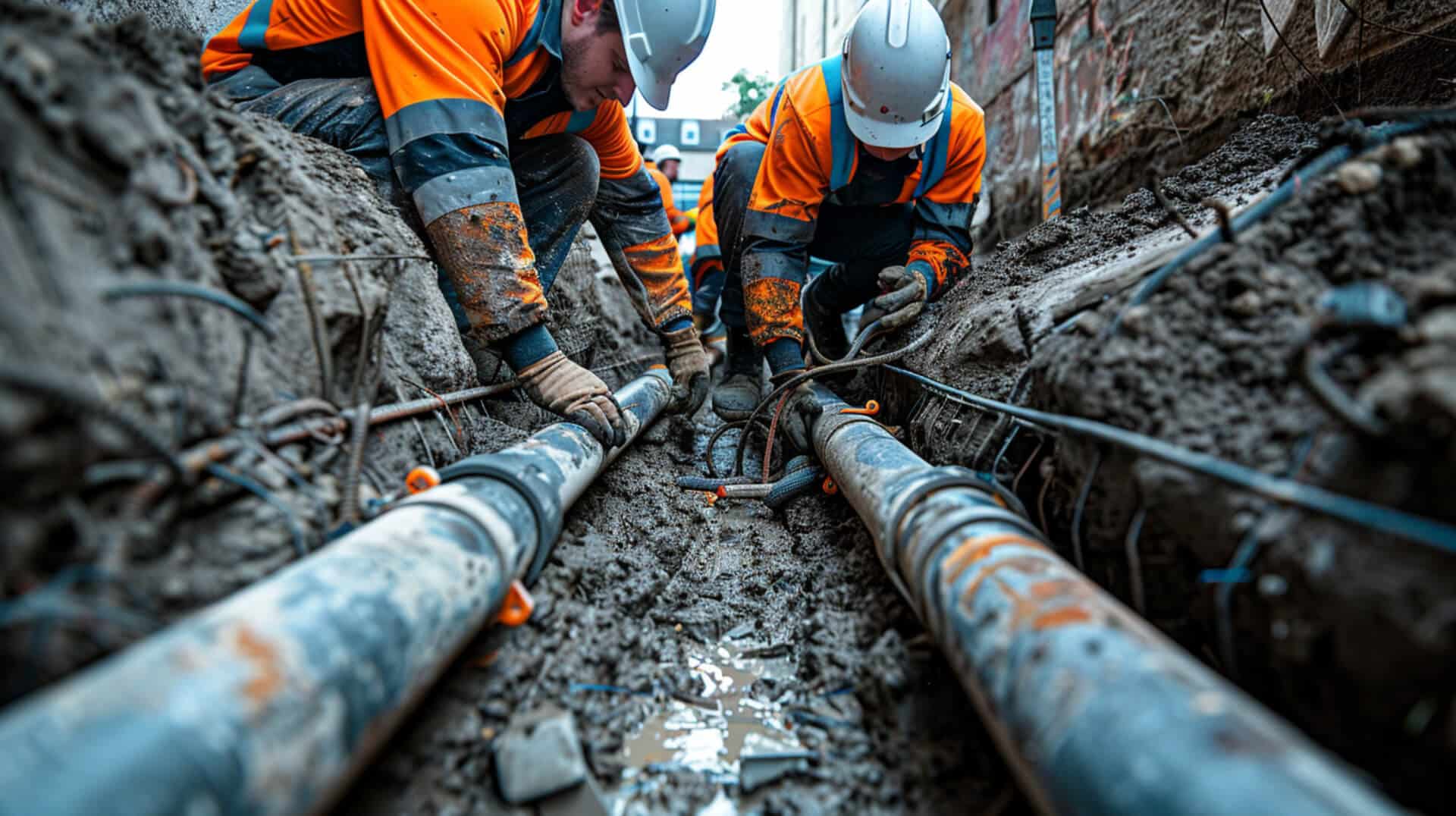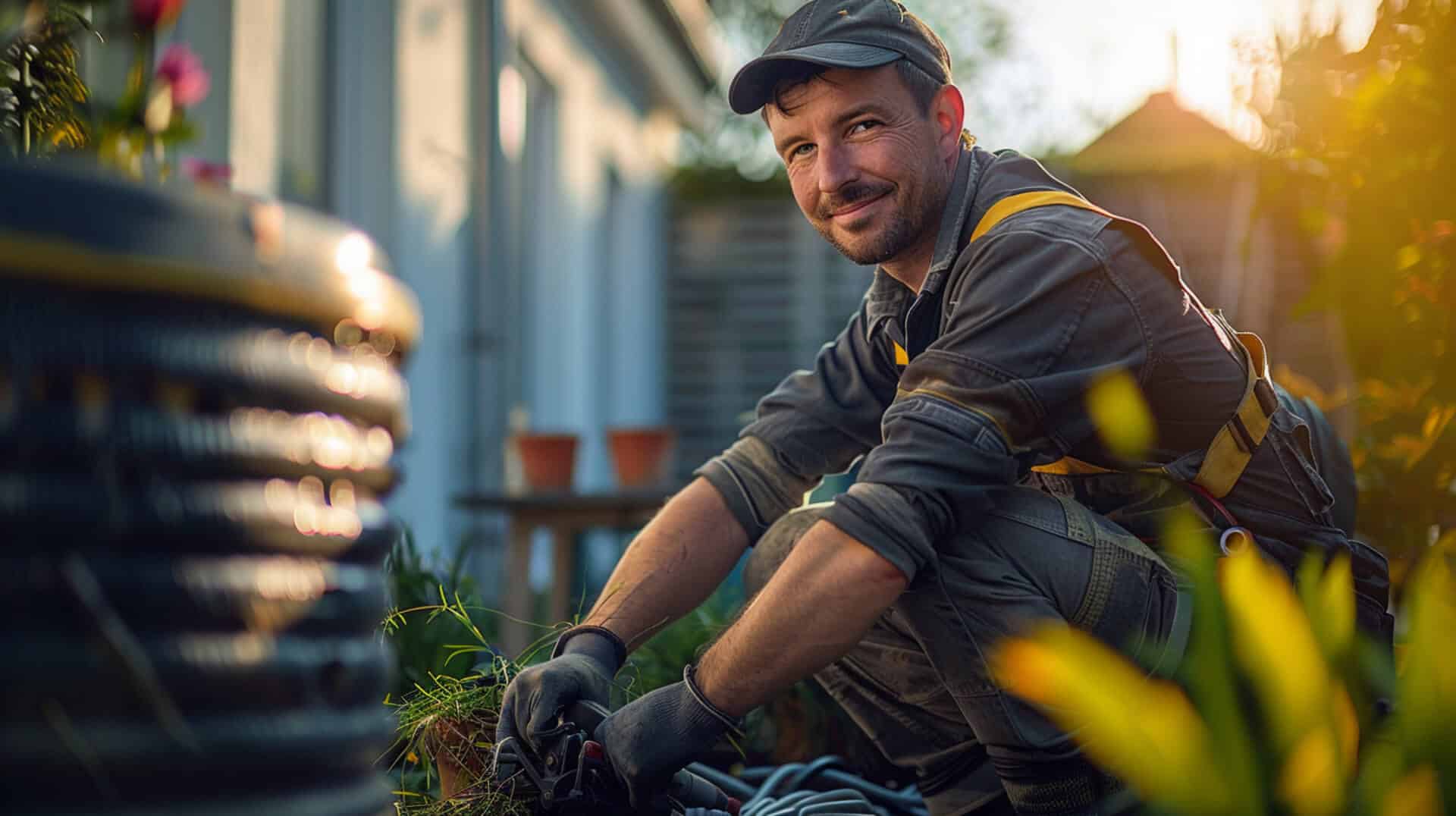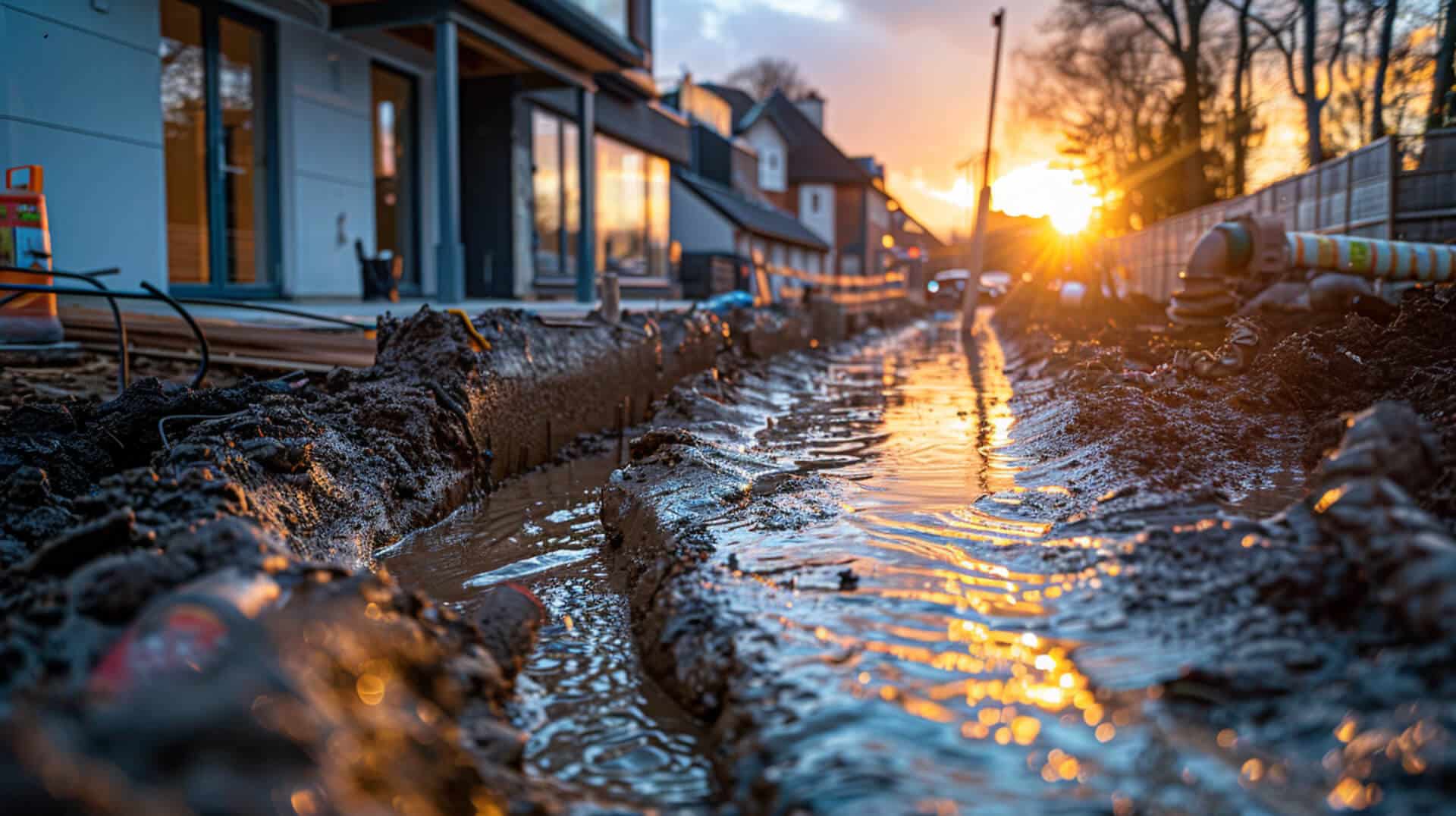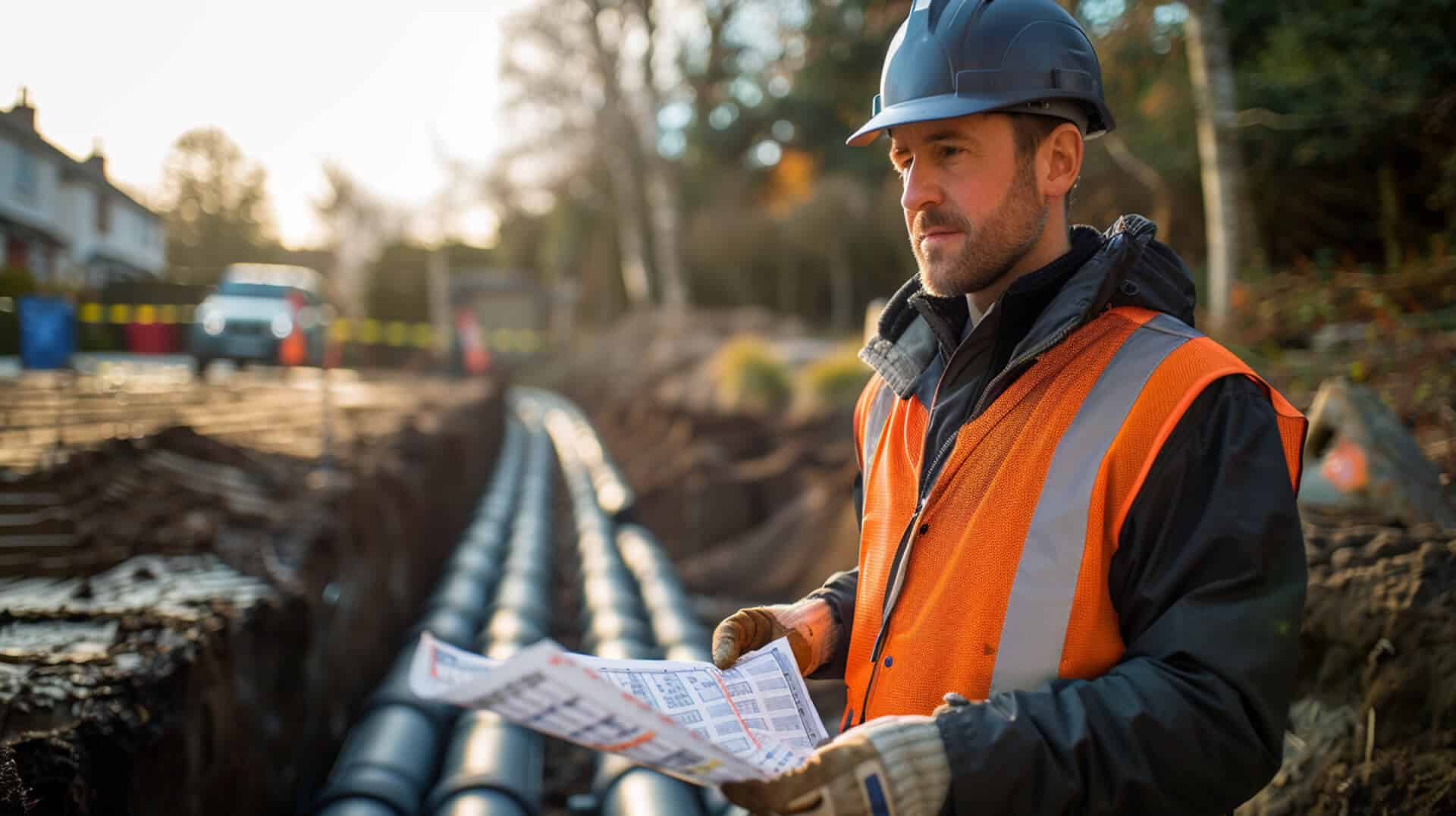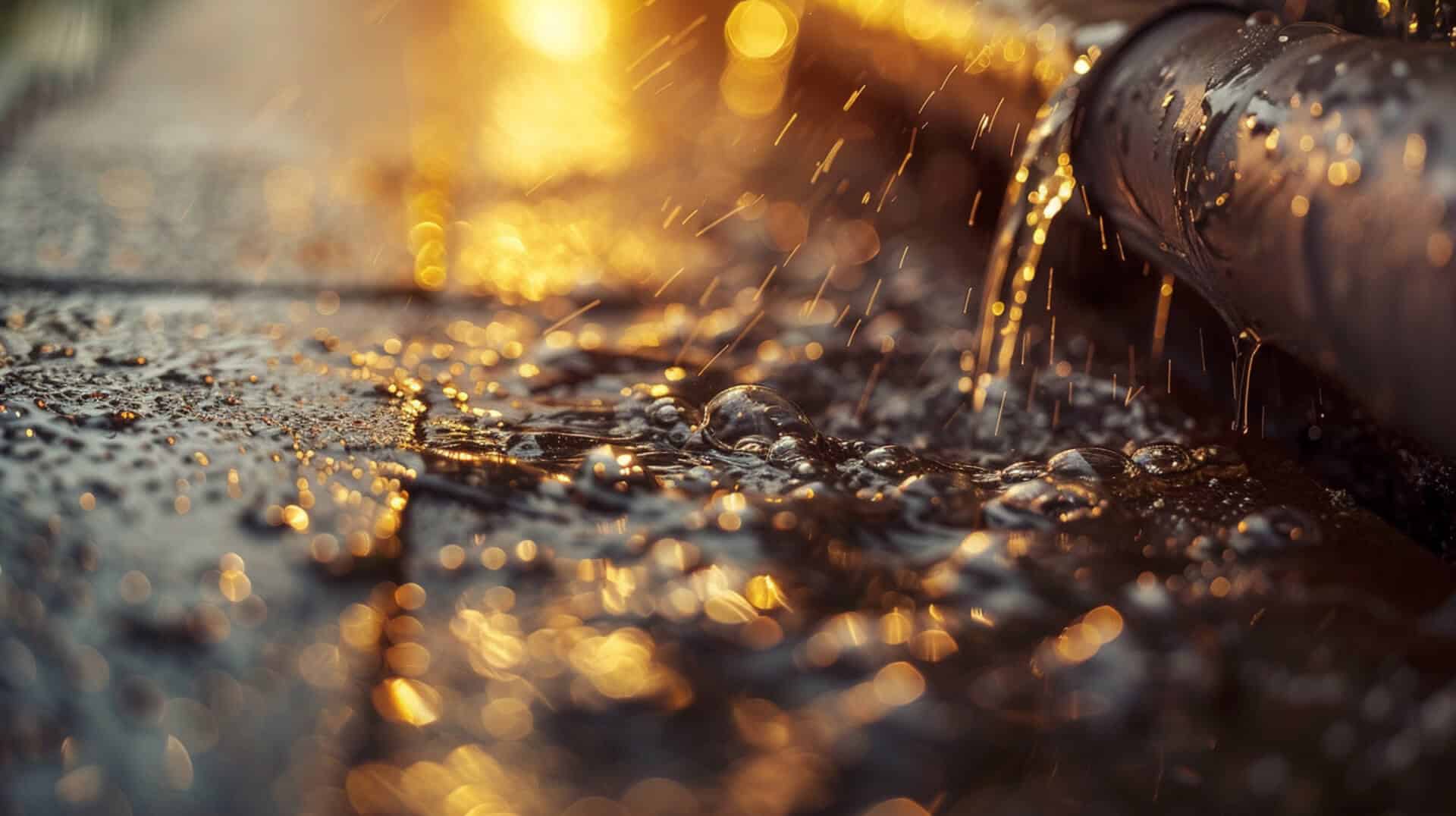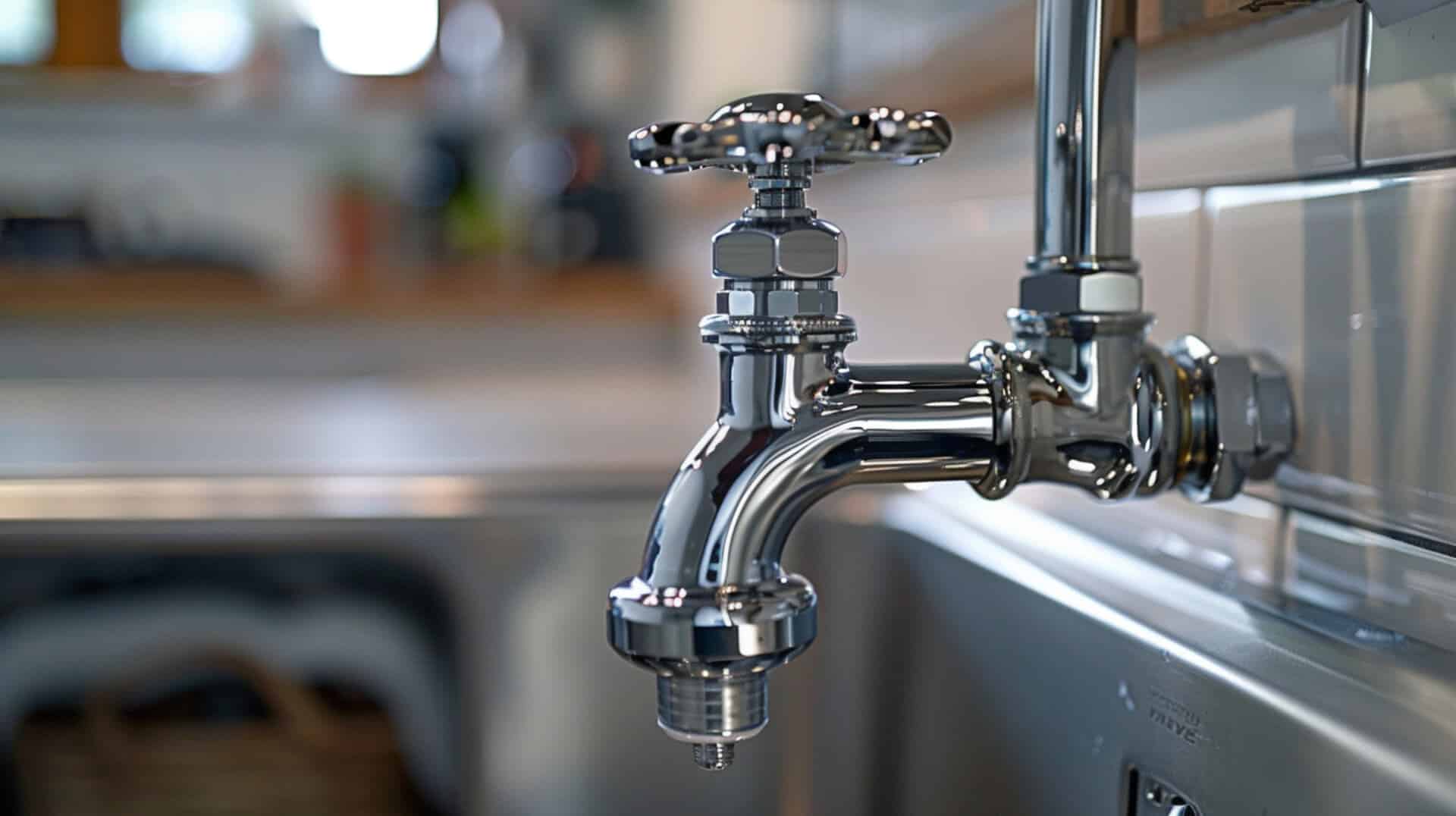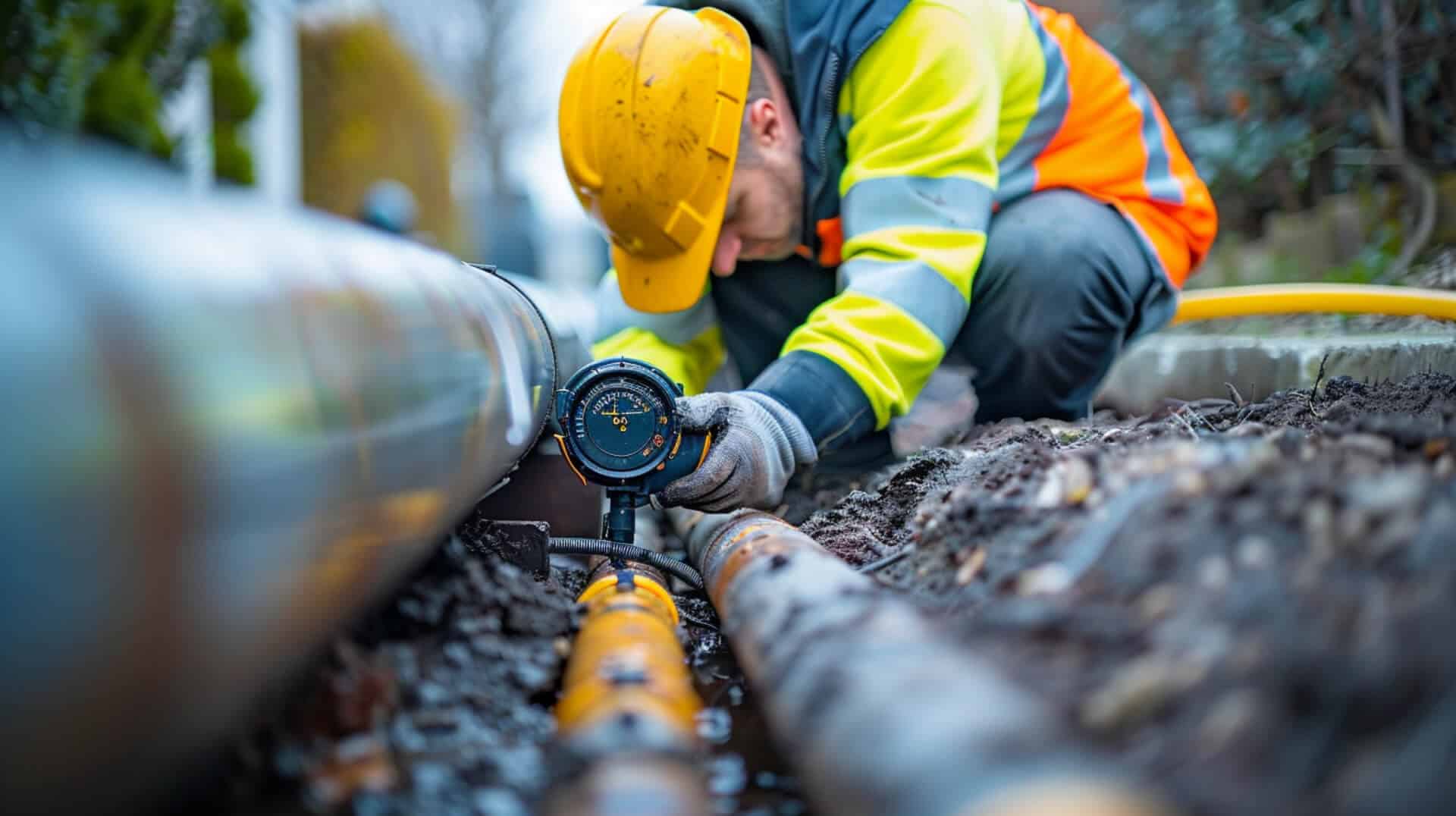 What Is The Process Of Drainage Ditch And Culvert Installation
What Is The Process Of Drainage Ditch And Culvert Installation
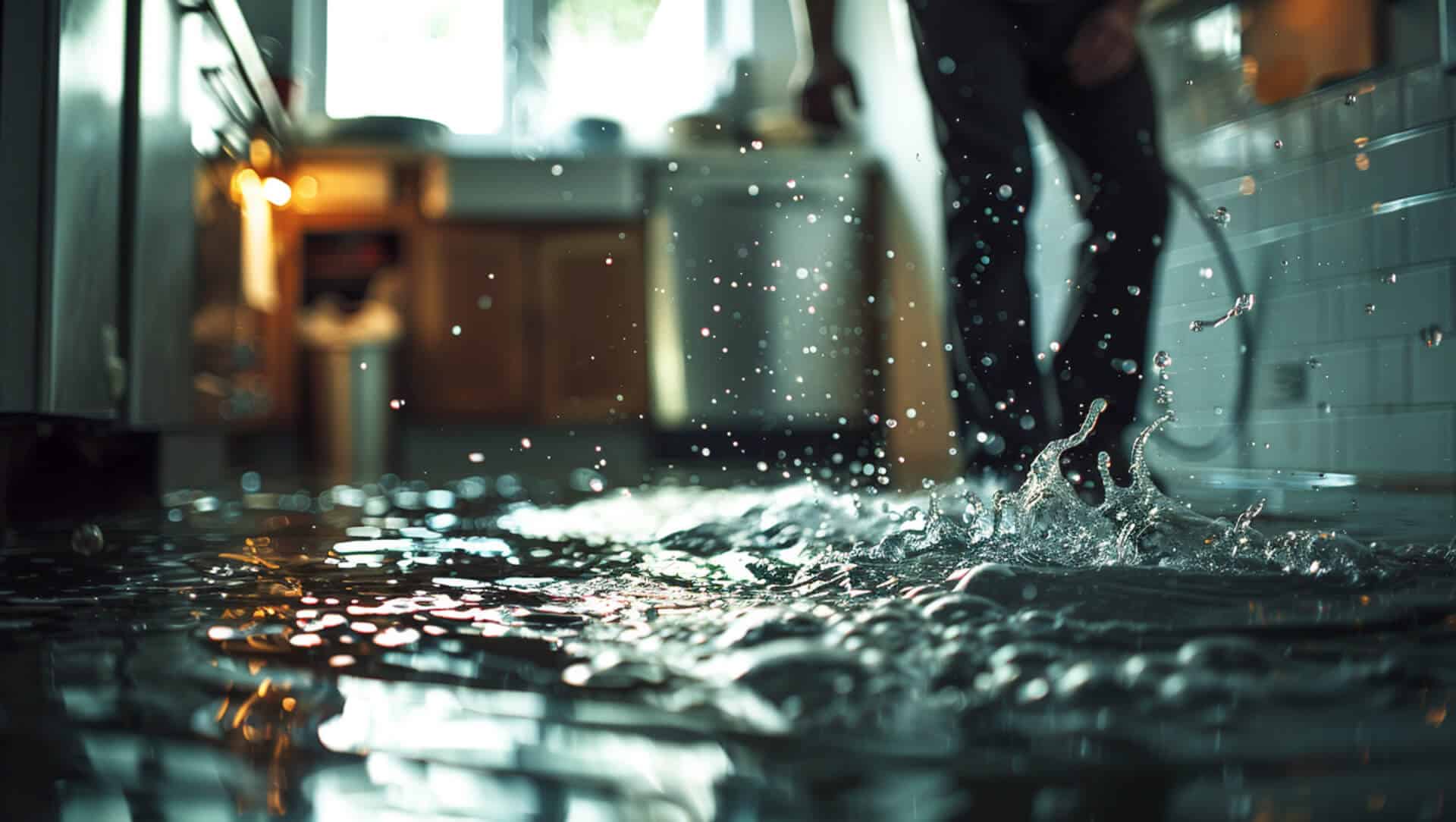
Drainage ditches and culverts serve a fundamental role in water management systems. They are engineered to redirect water flow, preventing flooding and erosion that can damage property and infrastructure. For property owners, business owners, and facility managers, understanding the purpose and proper installation of these systems is essential for safeguarding their investments and ensuring regulatory compliance.
Purpose of Drainage Systems
Drainage systems, including ditches and culverts, are designed to efficiently manage excess water due to rainfall, snowmelt, or other sources. By channelling water away from sensitive areas, they mitigate the risk of water damage and contribute to the overall health of the surrounding ecosystem.
Importance of Proper Installation
The effectiveness of a drainage system hinges on correct installation. Techniques that align with natural watercourses and consider the specific environmental conditions ensure long-term functionality and reduce the need for costly repairs or modifications.
Benefits to Stakeholders
For stakeholders, a well-installed drainage system translates to reduced maintenance costs, enhanced property value, and compliance with environmental regulations. It also plays a crucial role in community safety by reducing the likelihood of flood-related incidents.
Typical Installation Sites
Drainage ditches and culverts are commonly installed along roadways, within agricultural fields, and around commercial and residential developments. Their placement is strategic, often at low points of the landscape or areas prone to water accumulation, to maximise water diversion and minimise impact on the land.
Understanding the Basics of Drainage Systems
Drainage systems are integral to managing water flow in both urban and rural settings. They prevent water accumulation that can lead to flooding and structural damage. Understanding the components and materials of these systems is essential for their effective implementation.
Key Components of a Drainage System
A typical drainage system consists of pipes, ditches, culverts, and basins. These components work together to channel water away from areas where it can cause harm. Pipes transport water underground, while ditches and culverts facilitate surface water movement. Basins collect water temporarily during heavy rainfall.
Underground vs. Surface Drainage Systems
Underground drainage systems are composed of pipes laid beneath the surface, which collect and redirect water to a discharge point, often unseen and unnoticed. Surface drainage systems, such as ditches and culverts, are visible and work by guiding water across the landscape, preventing accumulation and erosion.
Importance of Material Selection
The durability of a drainage system is heavily dependent on the materials used. PVC, concrete, HDPE, and steel are common choices, each with unique properties that suit different environments and loads. For instance, PVC is lightweight and easy to instal, while concrete offers strength and longevity.
Colour Coding for Pipe Differentiation
Colour coding is a practical method for identifying the purpose of pipes and their contents. Terracotta is typically used for underground drainage to distinguish it from other utilities. Above-ground pipes may have varied colours, indicating their function and ensuring they are equipped with UV protection to withstand sunlight exposure.
By selecting appropriate materials and understanding the system’s layout, you can ensure a long-lasting and efficient drainage system.
Legal and Environmental Considerations Before Installation
Before commencing the installation of drainage ditches and culverts, it is imperative to understand and adhere to the relevant legal and environmental regulations. These guidelines are designed to ensure that water management systems are installed without adversely affecting the surrounding environment and in compliance with local laws.
Compliance with Regulations
Prior to installation, you must comply with Approved Document H, which sets standards for drainage and waste disposal. This document provides the necessary guidance on how to design and instal drainage systems to meet building regulations.
Planning Permissions and Water Discharge Consent
You may need to obtain planning permission from your local authority, especially if the installation will alter the landscape or affect public areas. Additionally, water discharge consent might be required to ensure that the redirected water does not negatively impact local watercourses or wildlife.
Roles of Local Councils and the Environment Agency
Local councils and the Environment Agency play crucial roles in managing flood risks and protecting water quality. They provide guidelines and support for property owners undertaking drainage projects. It is important to consult with them to ensure your project aligns with environmental standards and contributes to sustainable water management.
Obtaining Land Drainage Consent
For works that affect watercourses, Land Drainage Consent may be necessary. Information on how to apply for this consent is typically available on the websites of local councils or the Environment Agency. It is advisable to secure this consent before starting any work to avoid legal complications.
By considering these legal and environmental factors, you can ensure that your drainage project is compliant, environmentally responsible, and less likely to encounter regulatory obstacles.
Planning and Designing Your Drainage Project
Proper planning and design are crucial for the successful installation of drainage ditches and culverts. This phase involves identifying potential water issues, calculating dimensions for efficiency, and considering the integration with existing systems.
Identifying Water Problem Sources
To begin, assess your property to identify areas where water accumulates or flows excessively. Look for signs of erosion, waterlogged ground, or damaged vegetation. These indicators help pinpoint the sources of water problems that your drainage system will need to address.
Determining System Dimensions
The depth, width, and slope of your drainage system are determined by the volume of water to be managed and the topography of your land. A minimum slope of 1 in 40 is recommended for effective water flow. The dimensions should be sufficient to handle peak flow rates without causing overflow or back-up.
Importance of Invert Levels and Pipe Dimensions
Invert levels, the lowest point inside a pipe, are critical for maintaining flow efficiency. Pipe dimensions also play a role in ensuring that the system can handle the expected water volume. Incorrect sizing can lead to blockages or inadequate drainage, so careful calculation is necessary.
Integration with Existing Infrastructure
When planning your drainage system, consider how it will connect to existing soil pipes and waste systems. Seamless integration is essential to prevent leaks and ensure that the entire system functions cohesively. Adapters may be required to connect different types of pipes or materials effectively.
By addressing these aspects during the planning and design stage, you can create a drainage system that is efficient, reliable, and well-integrated with your property’s existing infrastructure.
The Installation Process: Step-by-Step Guide
When preparing for the installation of drainage ditches and culverts, a methodical approach is essential for ensuring the system’s effectiveness and longevity. The following steps outline the process from initial preparation to the final protective measures.
Initial Preparation for Installation
Before any physical work begins, it is crucial to identify the sources of water problems and plan the layout of the drainage system. This includes marking the path for the ditch or culvert, ensuring it aligns with natural watercourses for optimal flow. You should also check for underground utilities to avoid disruptions.
Trench Preparation and Excavation
Safe and effective trench preparation involves setting the correct depth and slope, which should be a minimum of 1 in 40 to ensure adequate water flow. Excavation must be conducted with precision, using appropriate tools and machinery while following safety guidelines to prevent accidents.
Installation Techniques for Durability
To ensure long-term durability, specific installation techniques are recommended. These include laying a solid foundation for the pipes, using correct connection methods like push fit or rubber seals, and ensuring the alignment is maintained throughout the length of the trench.
Applying Protective Measures
After installation, protective measures such as applying pea shingle for bedding and backfilling with appropriate materials are necessary to safeguard the system. Erosion control techniques should be implemented to maintain the integrity of the drainage structure, especially in areas prone to heavy rainfall or water flow.
By following these steps, you can instal a drainage system that is robust, efficient, and capable of withstanding environmental stresses, ensuring proper water management for years to come.
Material Selection for Drainage Projects
Selecting the right materials for your drainage project is pivotal to ensure durability and functionality. The choice of material affects the system’s longevity and its ability to withstand environmental conditions.
Criteria for Choosing Drainage Materials
When choosing materials for drainage ditches and culverts, consider factors such as soil type, water volume, and environmental exposure. PVC, concrete, HDPE, and steel are commonly used, each offering different benefits. PVC is lightweight and resistant to chemical erosion, concrete is known for its strength, HDPE offers flexibility and resistance to impact, and steel is valued for its durability.
Connection Methods for Drainage Systems
Seamless integration of drainage components is essential to prevent leaks and ensure a cohesive system. Various connection methods are employed to achieve this integration.
Techniques for Secure Pipe Connections
Push-fit joints and rubber seals are popular for their ease of installation and reliable seals. For a more permanent connection, especially between different materials, methods such as chamfering the pipe ends and applying lubrication facilitate a smooth insertion and create a watertight seal.
Utilisation of Colour-Coded Materials
Colour coding is not only a practical tool for installation but also aids in future maintenance. Terracotta is typically used for underground pipes to differentiate them from other utilities, while other colours may indicate specific functions or contain UV protection for above-ground installations.
By carefully selecting materials and employing the correct connection methods, you can ensure the integrity and efficiency of your drainage system.
Integrating Drainage Systems with Existing Infrastructure
Integrating a new drainage system with existing infrastructure requires careful planning and the use of specific components to ensure compatibility and functionality.
Compatibility with Soil Pipes
To connect new drainage systems with existing soil pipes, one must assess the current system’s layout and condition. It is important to match the new system’s dimensions and materials with the old ones to ensure a seamless transition and avoid potential blockages or leaks.
Adapters for Seamless Connection
Adapters play a crucial role in joining sections of the drainage system that have differing diameters or are made from different materials. These fittings must be chosen based on the specific requirements of the system to maintain a consistent flow and prevent any disruption in the drainage process.
Ensuring System Cohesion
Ensuring compatibility with the property’s current infrastructure is vital to avoid costly modifications or repairs in the future. The new system should complement and enhance the existing setup, facilitating efficient water management without necessitating significant alterations.
Addressing Integration Challenges
Challenges may arise when integrating new and old systems, particularly if the existing infrastructure is aged or has unique specifications. In such cases, custom solutions may be required, and consulting with professionals is advisable to navigate these complexities effectively.
By considering these factors, property owners can successfully integrate new drainage systems with existing infrastructure, ensuring efficient water management and the longevity of the entire system.
Maintenance and Quality Assurance of Drainage Systems
Maintaining drainage ditches and culverts is essential to ensure they function effectively and prevent water management issues. Regular inspections and upkeep are necessary to sustain the system’s efficiency and comply with environmental standards.
Routine Maintenance for Drainage Systems
Periodic clearing of debris and sediment from ditches and culverts is crucial to prevent blockages that can lead to flooding. It is recommended that property owners inspect their drainage systems, especially after heavy rainfall or at least twice a year, to identify and rectify any potential issues.
Importance of Periodic Clearing
Regular clearing maintains the flow capacity of the drainage system and protects against water backup. This proactive measure safeguards the property from water damage and contributes to the overall longevity of the drainage infrastructure.
Adherence to Environmental Policies
Compliance with environmental policies during maintenance ensures that the natural habitat is preserved, and local wildlife is protected. It is important to follow guidelines set by environmental agencies, such as those provided by Defra, to maintain ecological balance while managing water flow.
Professional Inspections for Quality Assurance
Professional inspections can provide a comprehensive assessment of the drainage system’s condition. Experts can offer advice on necessary repairs or improvements and ensure that the system meets regulatory standards. Consider scheduling professional inspections if there are signs of significant wear or after major weather events.
By adhering to these maintenance and quality assurance practices, you can ensure that your drainage system remains in optimal condition, providing reliable water management for your property.
Tools and Materials Required for Drainage Installation
For the installation of drainage systems, a specific set of tools and materials is essential to ensure the process is carried out efficiently and safely.
Essential Tools for Installation
You will need shovels for excavation, levels to ensure proper gradient, and wheelbarrows for transporting materials. Additionally, protective clothing such as gloves and safety glasses is crucial to safeguard against potential hazards during the installation process.
Safety Measures and Protective Equipment
The use of personal protective equipment (PPE) is non-negotiable. Hard hats, steel-toed boots, and high-visibility vests are recommended to minimise the risk of injury. Adhering to safety protocols not only protects the individuals involved but also ensures that the installation process is not hindered by preventable accidents.
Consulting Professionals for Project Uncertainties
When uncertainties arise, consulting with professionals can provide clarity and guidance. Experts in drainage systems can offer valuable insights into the design and installation process, helping to avoid common pitfalls and ensuring that the system meets all necessary standards and regulations.
Accessing Comprehensive Installation Guides
Comprehensive installation guides are available through various resources, including manufacturers’ websites, home improvement stores, and professional services. These guides provide detailed instructions and can be invaluable references throughout the installation process.
Addressing Common Installation Challenges
During the installation of drainage systems, property owners may encounter a variety of challenges. Understanding these common issues and knowing how to address them is crucial for a successful installation.
Common Issues in Drainage System Installation
One frequent challenge is ensuring the correct depth and alignment of the drainage ditch or culvert. Inadequate depth can lead to insufficient water flow, while improper alignment might cause water to pool, potentially leading to erosion or property damage.
Overcoming Depth and Alignment Challenges
To overcome these challenges, it is important to conduct a thorough site assessment before installation. Use precise measuring tools and consult installation guides or professionals to ensure that the depth and alignment meet the necessary specifications for efficient water management.
Importance of Accurate Water Problem Source Identification
Accurately identifying the sources of water problems is essential. Misidentification can result in ineffective solutions, leading to continued or exacerbated water management issues. Careful analysis of the property’s topography and water flow patterns is necessary to pinpoint the exact areas that require intervention.
Making Adjustments During Installation
If issues arise during the installation process, adjustments may be needed. Flexibility is key, as sticking rigidly to a plan that is not working can lead to poor results. Monitor the installation closely and be prepared to make changes to the design or approach if necessary to ensure the system functions as intended.
Professional Consultation and Project Planning
Engaging with professional consultants can significantly enhance the planning and execution of drainage projects. Their expertise ensures that both technical and regulatory aspects are addressed, leading to a successful installation.
Benefits of Professional Advice
Professional advice can provide you with insights into the latest industry standards and innovative solutions for drainage management. Experts can help tailor a plan that suits your property’s specific needs, potentially saving time and resources by avoiding common pitfalls.
Project Duration and Skill Level Considerations
When planning your drainage project, it’s important to realistically assess the duration and the skill level required. Professionals can help estimate the timeline and identify if specialised skills are necessary, ensuring that the project is completed efficiently and to a high standard.
Importance of Legal and Environmental Expertise
Consulting with experts on legal and environmental matters is crucial. They can guide you through the necessary permits and ensure that your project complies with local regulations, helping to protect natural resources and avoid legal complications.
Finding Reliable Consultation Services
Reliable professional consultation services can be found through industry associations, local business directories, or recommendations from others who have completed similar projects. Ensure that the consultants you engage with have a proven track record and relevant experience in drainage system installations.
By considering these factors and seeking professional guidance, you can ensure that your drainage project is well-planned, compliant with regulations, and executed with the necessary expertise.
Key Takeaways from Drainage Installation
The installation of drainage ditches and culverts is a critical process for effective water management. It involves careful planning, adherence to regulations, and precise execution. Property owners should ensure they understand the purpose and requirements of such systems to maintain their property’s integrity.
Ensuring Longevity and Efficiency
To ensure the longevity and efficiency of drainage systems, proper material selection, installation techniques, and regular maintenance are essential. Using durable materials like PVC, concrete, HDPE, or steel and following correct installation practices will contribute to a long-lasting system.
The Role of Ongoing Maintenance
Ongoing maintenance, including periodic clearing and inspections, is vital to prevent blockages and ensure the system operates as intended. Adherence to environmental guidelines during maintenance protects local ecosystems and complies with legal standards.
Resources and Support for Drainage Projects
For future drainage projects, additional resources and support can be found through local building authorities, environmental agencies, and professional consultants. These entities can provide guidance, ensure compliance with regulations, and offer solutions tailored to specific needs.
By focusing on these key aspects, property owners can effectively manage water on their land, preventing potential damage and contributing to sustainable water practices.
